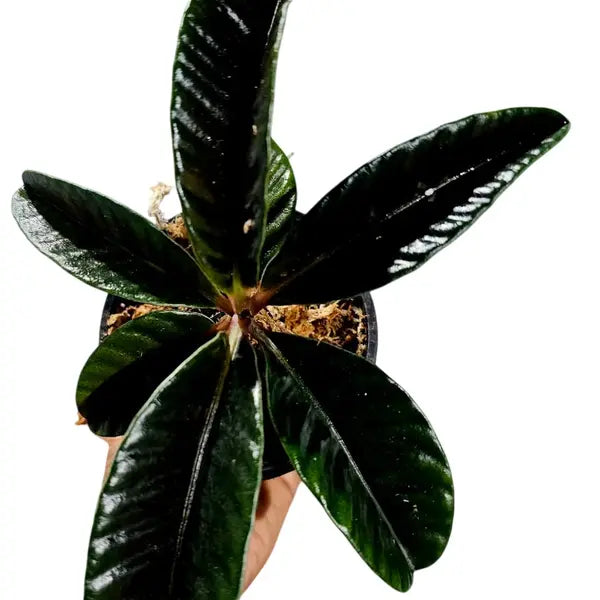
Labisia Butterfly
Selling Size : Single Plant | Pot Included | Secure Packing | Free Delivery
The Labisia Butterfly is a beautiful and unique plant that thrives in conditions that mimic its native tropical rainforest habitat. It is known for its striking foliage, which can vary in color and pattern depending on the specific variety.
Here's a comprehensive guide to caring for your Labisia Butterfly plant:
Light
Bright, indirect light is best. Labisia plants are understory dwellers in their natural habitat, meaning they get filtered, dappled sunlight.
Avoid direct sunlight at all costs, as it will scorch the leaves and cause the unique coloration to fade.
Signs of improper lighting: If the plant is in low light, it may become leggy and lose its vibrant color. Crispy leaf edges can be a sign of too much direct sun.
Watering
Keep the soil consistently moist but not waterlogged. Allow the top inch of the soil to dry out before watering again.
Use a well-draining potting mix to prevent root rot, which is a common issue for Labisia if the soil stays soggy.
Yellowing leaves are often a sign of overwatering. Crispy or curled leaves can indicate underwatering or low humidity.
Humidity and Temperature
High humidity is crucial. Labisia thrives in humidity levels of 60% or higher.
Ways to increase humidity:
Use a humidifier near the plant.
Place the pot on a pebble tray with water.
Grow it in a terrarium or vivarium, which is often the easiest way to meet its high humidity needs.
Maintain a warm, stable temperature between 65-80°F (18-27°C).
Avoid cold drafts and sudden temperature changes, as these can cause the leaves to drop.
Soil
Use a rich, well-draining, and airy potting mix.
A good mix would include components like orchid bark, peat-free compost, coco coir, and perlite to provide a balance of moisture retention and good air circulation for the roots.
Labisia prefers slightly acidic soil with a pH range of 5 to 7.
Fertilizing
Feed your Labisia with a balanced liquid houseplant fertilizer at half-strength once a month during the growing season (spring and summer).
Reduce or stop fertilizing during the fall and winter when the plant's growth slows down.
Labisia Butterfly Propagation
Labisia can be propagated by stem cuttings or by division.
Propagation is best done in the spring or summer.
When propagating, maintain a high humidity environment for optimal root formation.
Labisia Butterfly Other Tips
Prune away any dead or yellowing leaves to keep the plant tidy and encourage new, healthy growth.
Labisia is generally considered non-toxic to pets, but it's still a good idea to keep an eye on curious animals to prevent them from nibbling on the plant.

